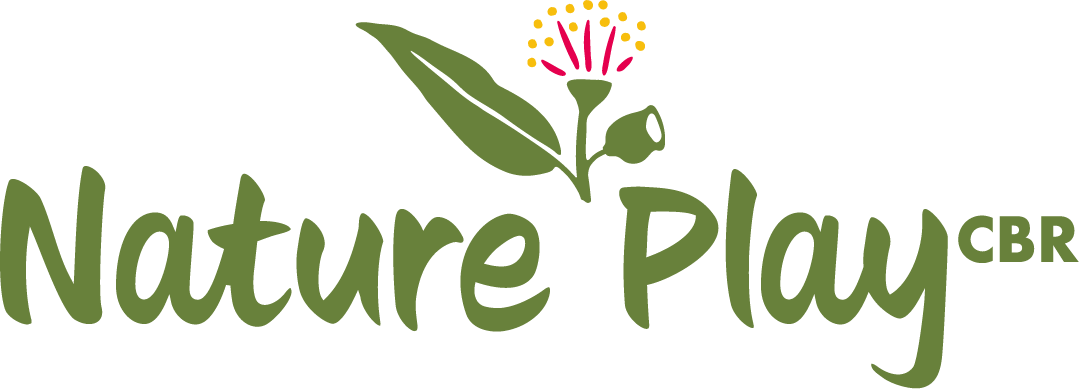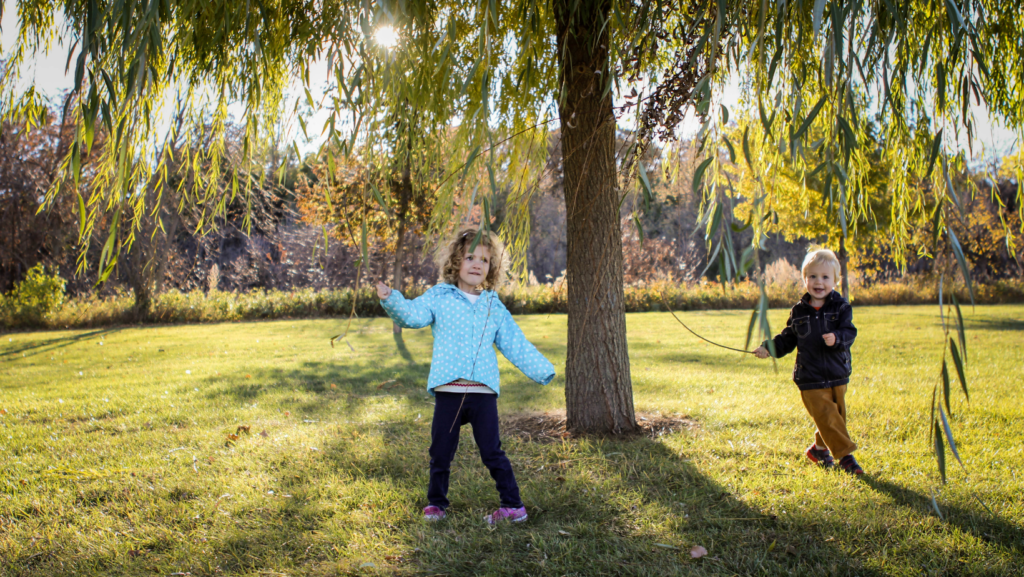Objective
It is often hypothesised that neighbourhood green space may help prevent well-known declines in physical activity and increases in sedentary behaviour that occur across childhood. As most studies in this regard are cross-sectional, the purpose of our study was to use longitudinal data to examine whether green space promotes active lifestyles as children grow older.
Methods
Data came from participants (n = 4983; age = 4–5) of the Longitudinal Study of Australian Children, a nationally representative study on health and child development. Physical activity and screen time were measured biennially (2004–2012) using questionnaires and time use diaries. Quantity of neighbourhood green space was objectively measured using Australian Bureau of Statistics mesh block data for each participant’s statistical area level 2. Multilevel regression was used to test for associations between physical activity and screen time with green space quantity, adjusting for socio-economic confounders.
Results
Boys living in areas with 10 % more neighbourhood green space had a: 7 % (95 % CI = 1.02, 1.13) greater odds of choosing physically active pastimes; 8 % (95 % CI = 0.85, 1.00) lower odds of not enjoying physical activity; 2.3 min reduction in weekend television viewing (95 % CI = −4.00, −0.69); and 7 % (95 % CI = 1.02; 1.12) and 9 % (95 % CI = 1.03; 1.15) greater odds of meeting physical activity guidelines on weekdays and weekends, respectively. No statistically (or practically) significant results were observed for girls.
Conclusion
Current provisions of neighbourhood green space may be more amenable to promoting active lifestyles among boys than girls. Research is needed to explore what types of green space promote active lifestyles in all children.
Main Research Outcomes:
- Over 90% of children enjoyed physical activity.
- As children got older the proportion of boys who enjoyed physical activity was stable, however it decreased for girls.
- The proportion of children who chose to do physical activity was much lower than the proportion who enjoyed physical activity.
- The number of children meeting physical activity guidelines peaked at age 10-11 years.
References:
1.
Astell-Burt T, Feng X, Kolt GS. Green space is associated with walking and moderate-to- vigorous physical activity (MVPA) in middle-to-older-aged adults: Findings from 203 883 Australians in the 45 and Up Study. Br J Sports Med. 2014:48(5):404-6. doi:10.1136/bjsports-2012-092006 [PubMed]2.
Coombes E, Jones AP, Hillsdon M. The relationship of physical activity and overweight to objectively measured green space accessibility and use. Soc Sci Med. 2010;70(6):816–22. doi: 10.1016/j.socscimed.2009.11.020. [PMC free article] [PubMed] [CrossRef] [Google Scholar]3.
Sugiyama T, Giles-Corti B, Summers J, du Toit L, Leslie E, Owen N. Initiating and maintaining recreational walking: a longitudinal study on the influence of neighborhood green space. Prev Med. 2013;57(3):178–82. doi: 10.1016/j.ypmed.2013.05.015. [PubMed] [CrossRef] [Google Scholar]4.
Maas J, Verheij RA, Spreeuwenberg P, Groenewegen PP. Physical activity as a possible mechanism behind the relationship between green space and health: a multilevel analysis. BMC Public Health. 2008;8(1):206. doi: 10.1186/1471-2458-8-206. [PMC free article] [PubMed] [CrossRef] [Google Scholar]5.
Mytton OT, Townsend N, Rutter H, Foster C. Green space and physical activity: an observational study using health survey for England data. Health Place. 2012;18(5):1034–41. doi: 10.1016/j.healthplace.2012.06.003. [PMC free article] [PubMed] [CrossRef] [Google Scholar]6.
Astell-Burt T, Mitchell R, Hartig T. The association between green space and mental health varies across the lifecourse. A longitudinal study. J Epidemiol Community Health. 2014;68:578–83. doi: 10.1136/jech-2013-203767. [PubMed] [CrossRef] [Google Scholar]7.
Lachowycz K, Jones A. Greenspace and obesity: a systematic review of the evidence. Obes Rev. 2011;12(5):e183–9. doi: 10.1111/j.1467-789X.2010.00827.x. [PubMed] [CrossRef] [Google Scholar]8.
De Vries SI, Bakker I, Van Mechelen W, Hopman-Rock M. Determinants of activity- friendly neighborhoods for children: Results from the SPACE study. Am J Health Promot. 2007;21(4s):312–6. doi: 10.4278/0890-1171-21.4s.312. [PubMed] [CrossRef] [Google Scholar]9.
Timperio A, Giles-Corti B, Crawford D, Andrianopoulos N, Ball K, Salmon J, et al. Features of public open spaces and physical activity among children: findings from the CLAN study. Prev Med. 2008;47(5):514–8. doi: 10.1016/j.ypmed.2008.07.015. [PubMed] [CrossRef] [Google Scholar]10.
Wheeler BW, Cooper AR, Page AS, Jago R. Greenspace and children’s physical activity: a GPS/GIS analysis of the PEACH project. Prev Med. 2010;51(2):148–52. doi: 10.1016/j.ypmed.2010.06.001. [PubMed] [CrossRef] [Google Scholar]11.
Sanders T, Feng X, Fahey PP, Lonsdale C, Astell-Burt T. Greener neighbourhoods, slimmer children? Evidence from 4423 participants aged 6 to 13 years in the longitudinal study of Australian children. Int J Obes. 2015;39(4):1224–9. doi: 10.1038/ijo.2015.69. [PubMed] [CrossRef] [Google Scholar]12.
Steinberg L, Silverberg SB. The vicissitudes of autonomy in early adolescence. Child Dev. 1986;57:841–51. doi: 10.2307/1130361. [PubMed] [CrossRef] [Google Scholar]13.
Soloff C, Lawrence D, Johnstone R. Sample design (LSAC technical paper no. 1) Melbourne: Australian Institute of Family Studies; 2005. pp. 1–30. [Google Scholar]14.
Australian Bureau of Statistics . Information Paper, Draft Mesh Blocks. Canberra: Australian Bureau of Statistics; 2005. [Google Scholar]15.
Australian Bureau of Statistics . Australian Statistical Geography Standard (ASGS): Volume 1 – Main Structure and Greater Capital City Statistical Areas. Canberra: Australian Bureau of Statistics; 2011. [Google Scholar]16.
Astell-Burt T, Feng X, Kolt GS. Greener neighborhoods, slimmer people? Evidence from 246 920 Australians. Int J Obes. 2013;38:156–9. doi: 10.1038/ijo.2013.64. [PubMed] [CrossRef] [Google Scholar]17.
Astell-Burt T, Feng X, Kolt GS. Is neighborhood green space associated with a lower risk of type 2 diabetes? Evidence from 267,072 Australians. Diabetes Care. 2014;37(1):197–201. doi: 10.2337/dc13-1325. [PubMed] [CrossRef] [Google Scholar]18.
Sallis JF, Taylor WC, Dowda M, Freedson PS, Pate RR. Correlates of vigorous physical activity for children in grades 1 through 12: Comparing parent-reported and objectively measured physical activity. Pediatr Exerc Sci. 2002;14(1):30–44. [Google Scholar]19.
Sallis JF, Prochaska JJ, Taylor WC, Hill JO, Geraci JC. Correlates of physical activity in a national sample of girls and boys in grades 4 through 12. Health Psychol. 1999;18(4):410. doi: 10.1037/0278-6133.18.4.410. [PubMed] [CrossRef] [Google Scholar]20.
DiLorenzo TM, Stucky-Ropp RC, Vander Wal JS, Gotham HJ. Determinants of exercise among children. II. A longitudinal analysis. Prev Med. 1998;27(3):470–7. doi: 10.1006/pmed.1998.0307. [PubMed] [CrossRef] [Google Scholar]21.
Stucky-Ropp RC, DiLorenzo TM. Determinants of exercise in children. Prev Med. 1993;22(6):880–9. doi: 10.1006/pmed.1993.1079. [PubMed] [CrossRef] [Google Scholar]23. Baxter J. Children’s time use in the Longitudinal Study of Australian Children: Data quality and analytical issues in the 4-year cohort (LSAC techincal paper no. 4). Melbourne: Australian Institute of Family Studies; 2007. p. 1-47.
24.
Mullan K. Longitudinal analysis of LSAC time diary data: Considerations for data users (LSAC Technical Paper no. 11) Canberra, Australia: Australian Institute of Family Studies; 2014. [Google Scholar]25.
Department of Health . Australia’s Physical Activity & Sedentary Behaviour Guidelines for Children (5–12 years) 2014. [Google Scholar]26.
Hardy L, King L, Espinel P, Cosgrove C, Bauman A. NSW Schools Physical Activity and Nutrition Survey (SPANS) 2010: Full Report. 2013. [Google Scholar]27.
Sallis JF, Prochaska JJ, Taylor WC. A review of correlates of physical activity of children and adolescents. Med Sci Sports Exerc. 2000;1:19–21. [PubMed] [Google Scholar]28.
Blakemore T, Gibbings J, Strazdins L, editors. Measuring the socio-economic position of families in HILDA and LSAC. University of Sydney: ACSPRI Social Science Methodology Conference; 2006. [Google Scholar]29.
Ou L, Chen J, Hillman K, Eastwood J. The comparison of health status and health services utilisation between Indigenous and non-Indigenous infants in Australia. Aust N Z J Public Health. 2010;34(1):50–6. doi: 10.1111/j.1753-6405.2010.00473.x. [PubMed] [CrossRef] [Google Scholar]30.
Rabe-Hesketh S, Skrondal A. Multilevel and Longitudinal Modeling Using Stata. Volume I: Continuous Responses. 3. Texas, USA: Stata Press; 2012. [Google Scholar]31.
Richardson EA, Mitchell R. Gender differences in relationships between urban green space and health in the United Kingdom. Soc Sci Med. 2010;71(3):568–75. doi: 10.1016/j.socscimed.2010.04.015. [PubMed] [CrossRef] [Google Scholar]32.
Cohen DA, McKenzie TL, Sehgal A, Williamson S, Golinelli D, Lurie N. Contribution of public parks to physical activity. Am J Public Health. 2007;97(3):509–14. doi: 10.2105/AJPH.2005.072447. [PMC free article] [PubMed] [CrossRef] [Google Scholar]33.
Timperio A, Crawford D, Telford A, Salmon J. Perceptions about the local neighborhood and walking and cycling among children. Prev Med. 2004;38(1):39–47. doi: 10.1016/j.ypmed.2003.09.026. [PubMed] [CrossRef] [Google Scholar]34.
Christian H, Zubrick SR, Foster S, Giles-Corti B, Bull F, Wood L, et al. The influence of the neighborhood physical environment on early child health and development: A review and call for research. Health Place. 2015;33:25–36. doi: 10.1016/j.healthplace.2015.01.005. [PubMed] [CrossRef] [Google Scholar]35.
Edwards N, Hooper P, Trapp GSA, Bull F, Boruff B, Giles-Corti B. Development of a Public Open Space Desktop Auditing Tool (POSDAT): A remote sensing approach. Appl Geogr. 2013;38:22–30. doi: 10.1016/j.apgeog.2012.11.010. [CrossRef] [Google Scholar]

